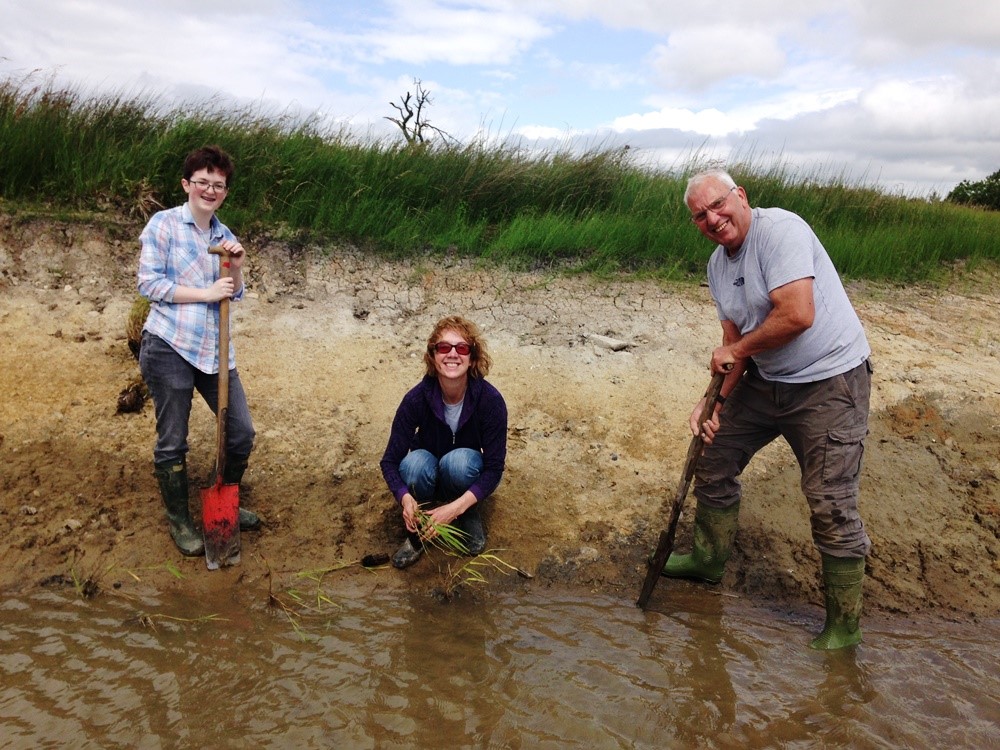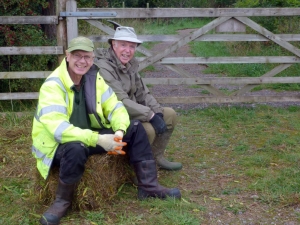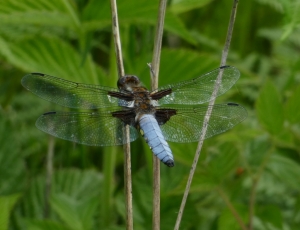Blog Archive (29) Posts Made in April 2014
Wildflower Walk
Wednesday, April 30th 2014
On the last Wednesday of each month volunteers complete a flower survey for us. With the recent warm weather, buds have been bursting and flowers can be seen in bloom across the reserve. The first of the Early Purple Orchids were seen earlier in the week, with many more leaves found today.
Fifty species of flower were recorded on the walk; flower guides came in useful to confirm several of our findings!
The areas along Risedale Beck, underneath the Hazel coppice, are almost in full bloom with Primrose, Greater Stitchwort and Bluebells all now showing beautifully.
Thank you to everyone who helped with this survey, if the sun keeps shining it could be a very good year for wildflowers here at Foxglove!
All systems go!
Tuesday, April 29th 2014
Today's volunteers have made the most of a wonderfully sunny day.
We've had lots of little jobs to do and so have had several teams completing the different tasks around the reserve.
One group worked on the path near the wetland, straightening up and replacing the kickboards along the path.
Once the wood had been replaced we used our compactor to compound the loose surface.
Another small (but mighty!) team continued with the painting of the Heathland fence.
Bob got a little bit carried away and poor Clemmie nearly ended up with a new coat!
With Ken and Eddie tackling the never-ending strimming one final team made good use of the dry spell and managed to burn a load of the reed which was cut over the winter, a hot job on a day like today!
Thank you to everyone for your hard work and enjoyable company.
Butterfly Bonanza
Tuesday, April 29th 2014
Unsurprisingly with the warm weather there have been a lot of butterflies on the wing around the reserve; seven species have been recorded during April. Each week John walks the reserve taking in as many of the different habitats as he can, recording all the butterflies he sees, this information is then sent off to the Yorkshire Branch of Butterfly Conservation.
Yesterday in the fine weather Green Veined Whites were recorded for the first time as well as 21 Orange Tips which were mostly seen around the wetland area. Peacocks, Tortoiseshells and Speckled Wood were also seen in good numbers. This female Orange Tip was photographed feeding from a Cuckooflower on the edge of a pond.
Quiz Answers and Results
Monday, April 28th 2014
Congratulations to Sue and Jo Poynton who are the winners of the English Towns South of the Humber Quiz. Congratulations to Mike Fenwick who also scored full marks, and to Garth Thomas and The Darwins who scored 39/40.
Below are the questions and answers.
- Brightly coloured waterway - Redditch
- An odd number of trees - Sevenoaks
- A chap owns this piece of grassland - Mansfield
- A mix up of what you wear - Ware
- Looks as though there are plenty of books here - Reading
- Is it twinned with Creepy? - Crawley
- The past tense of heave - Hove
- Robert, Earl of Leicester - Dudley
- Wear it with pride on S. David's Day - Leek
- Dave goes north to attempt this town - Daventry
- You need soap and a towel here - Bath
- A poet and an Economist meet - Milton Keynes
- How old are you? - Wantage
- Prime Minister from 1899-1902 - Salisbury
- Doctor Fostor took his brolly! - Gloucester
- Oddly enough it is nowhere near Epsom - Derby
- The answer comes from east of the town - Frome
- Looks like a large church for a Lion - Leominster
- A good place to cross the river? Looks like it! - Hereford
- Looks like Adam could use a slice of this for tea! - Evesham
- Is roast duck on the menu here? - Aylesbury
- He implored Ruth to look inside - Redruth
- You could find otters here! - Holt
- Two men met to form a town - Basildon
- Is this where Bernard Leech went to drink his beer? Potters Bar
- Newspapers no longer produced in this street - Fleet
- A necessary farm implement - Harrow
- Go here to find a pork pie - Melton Mowbray
- The Radetsky for example! - March
- Lord Patrick took photographs - Lichfield
- Either plenty of dogs or you're mad! - Barking
- Look in the splendid cottage - Didcot
- Did Noah build one on the river? - Newark on Trent
- A Learner would mix well - Ludlow
- Sounds like a holy woman has had her lunch! - Nuneaton
- The Kingmaker! - Warwick
- A Holy man mixed stone - St. Neots
- Is this sids town? - Diss
- Where cattle may cross the river - Oxford
- You have no right to rely on this city - Ely
Thank you again to Pat and Glennis who have once again compiled and marked this quiz for us. It has been very successful raising almost £70 for the reserve! There is another quiz already in the pipeline which will be released on the 26th May.
A Good Start
Sunday, April 27th 2014
The bird ringers have been out this weekend between the showers, checking the owl nest boxes. It was probably the most successful start to the season ever with 10 adult Tawny Owls retrapped, 16 hatched owlets and 9 eggs still to go. And all of these were from approximately 25% of the total boxes with many more still to be checked. One of the adults remains to be caught as it was in a box they had not bred in for 15 years.
The owls have started early and have really benefited from the mild weather, some of the young are well advanced. Of the adults all had been caught and ringed before – not a single new adult was among them! The ages ranged from 10 years old to 3 years old. Eight birds were breeding in the same box they were originally caught in as breeding adults showing how site faithful they are. One adult was breeding in the box it was born in, and one ringed as a chick near Hudswell Grange was breeding on Haig Road in the Garrison. We have lots more to do but this is a very positive start to the season indeed. Thanks to everyone who helped.
Many of the boxes are situated high up on trees, so a ladder is essential.
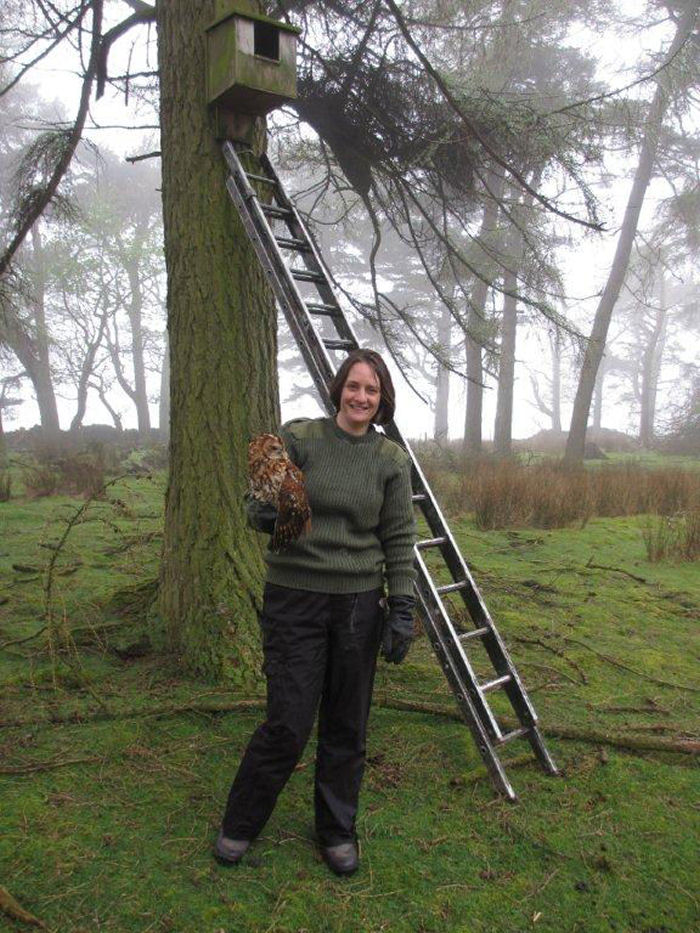
Gloves are also important to protect hands from very sharp claws.

The chicks are ringed and returned to the nest.
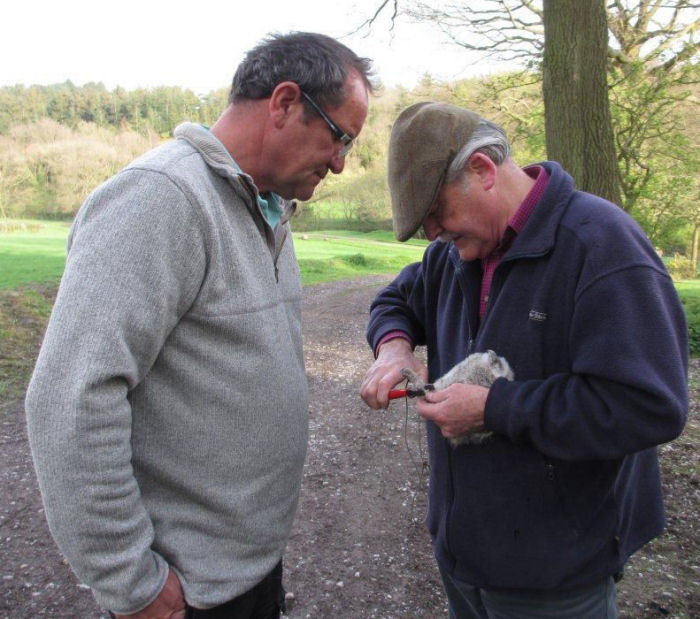
Waiting to be returned to the nest.

There are times when all you can say is aahhh. It just looks so comfy.
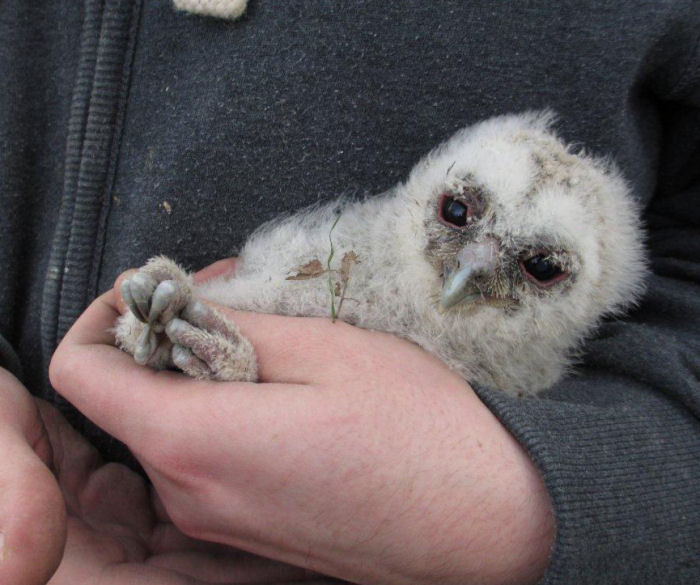
A close up of the adult Tawny Owl shows its beautiful plumage and sharp claws.
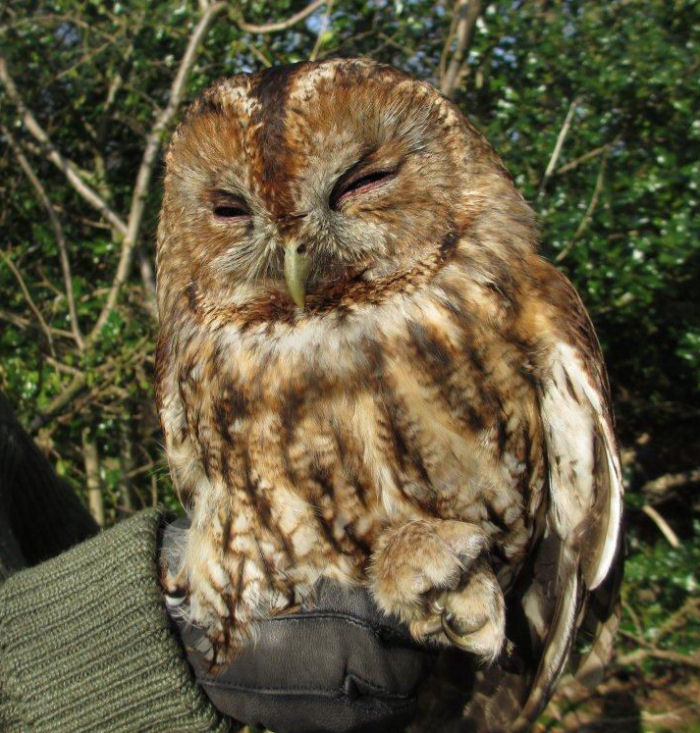
Without including the owls ringed this weekend 623 new Tawny Owls have been ringed on the Training Area and at Foxglove by the ringing group in the past 20 years. This total jumps to 763 when retraps are included. No birds from outside the area have ever been caught which demonstrates just how territorial they are.
Eco Club
Saturday, April 26th 2014
Our topic today was trees. On leaving the Field Centre we looked at newly pollarded willow trees. Along Risedale Beck we saw coppiced Hazel trees and talked about sunny glades for butterflies. The dark conifer woodland with very little green plant growth on the ground was compared with the deciduous areas, where many different plants were growing. We counted the rings on a cut conifer, which was guessed to be about 30 year old. The number of rings were between 30 and 35, so a good guess. After refreshments we set out with instructions on how to measure the age and height of a tree.
We chose the old Oak by one of the small streams. About one metre up, the circumference of the tree was measured.
Once this was noted we could work out its age. Every 2.5cm is equal to one year. Our Oak is about 128 years old. It could still have another hundred years or so to go.
Our attention then turned to the Grand Fir. Someone had to stand right up close to the tree.
Walking backwards to get the top of the tree in line with the tip of the pencil, proved interesting as the pencil carrier disappeared down a path! Then the 'tree' person had to 'walk along the pencil'. Finally that distance was measured.
In old measurements 29', when converted about 9 metres. After some thought we decided that we needed to work on the method as we realised that the Grand Fir was just a little taller than that!
Thank you to everyone who helped today.
When The Sun Comes Out
Saturday, April 26th 2014
One day sun, one day cold, one day wet. Our weather is never the same one year to the next and not even this week, one day to the next! When the sun comes out everything makes the most of it.
At the minute this is the only Early Purple Orchid that would pass the 'flower test'. We may find some more in flower on the flower walk on Wednesday.
Speckled Wood Butterflies enjoy small sunny areas, especially along wooded paths. Males set up territories and defend them against other males. This one was enjoying the sunshine!
Volunteers have been busy this week carrying out a variety of different jobs. Some have been involved in looking at the work needed to help with the Touchscreen project. More tree tubes have been checked. Much needed repairs to wheelbarrows have been completed. The Field Centre has had some TLC! Thank you to everyone who has given their time this week, it is greatly appreciated.
St George’s Day
Wednesday, April 23rd 2014
In honor of St George today's blog consists of a selection of red and white wildlife seen on the reserve today.
So, for the red, we have a Bullfinch. Earlier today, from the Field Centre windows, we watched as a male Bullfinch very gently fed its mate.

Also for the reds, we have a Seven-spot Ladybird.
For the whites; Greater Stitchwort.
A closer look at Wood Anemone…
Wood - sorrel
And finally for the whites; Blackthorn flowers.
Happy St. George's Day!
Team Tuesday
Tuesday, April 22nd 2014
Volunteers have spent a rather wet day finishing off some jobs around the reserve. All of the trees planted over the last few years have been checked and the tubes have been weeded out. Only a few of the trees planted have not survived; with the donation of new trees from the A1 project we have been able to replace these.
With fresh Spring growth showing, Foxglove has shed its winter coat and is looking great, even in the heavy rain today! The benefit of the winter work programme is clear to see as you walk along the footpaths. The Hazel coppice along Risedale Beck where volunteers worked hard earlier this year is now covered in a carpet of wildflowers. Bluebells are now in bloom, mixed in with Primrose, Barren Strawberry and Wood Anemone.
Thank you to everyone who has helped out over the winter, make sure you take some time to come and enjoy the fruits of your labour!
First Chicks and Ladybirds
Monday, April 21st 2014
Dippers are the first birds to have their nests checked as they breed in early spring. Today the first chicks were ringed. Adam donned waders (hopefully the holes are repaired!) to collect the chicks from the nest.

Carefully the five chicks received their rings, before being returned to the nest.

Back in Foxglove, a walk around discovered ladybirds galore. Unfortunately most of them decided that man-made structures were by far the best place to rest and sunbathe!
On the beech fence a Kidney Spot Ladybird was seen, usually found on Ash trees.
Closer inspection, then found a tiny Heather Ladybird, usually associated with Heather.
This Larch Ladybird was not disturbed by the interest of the watchers and continued to eat its greenfly! (The tiny red dot to the right is red spider mite.)
Then into the woodland where many 7 Spot Ladybirds were found. Having spent the winter searching for them and being unsuccessful we could only ask - Where have they all been?
It is not often that you can see the underside of a ladybird as they are excellent at turning themselves the right way up! You can see the three pairs of jointed legs.

A few seconds later it had turned round and walked down the blade of grass.
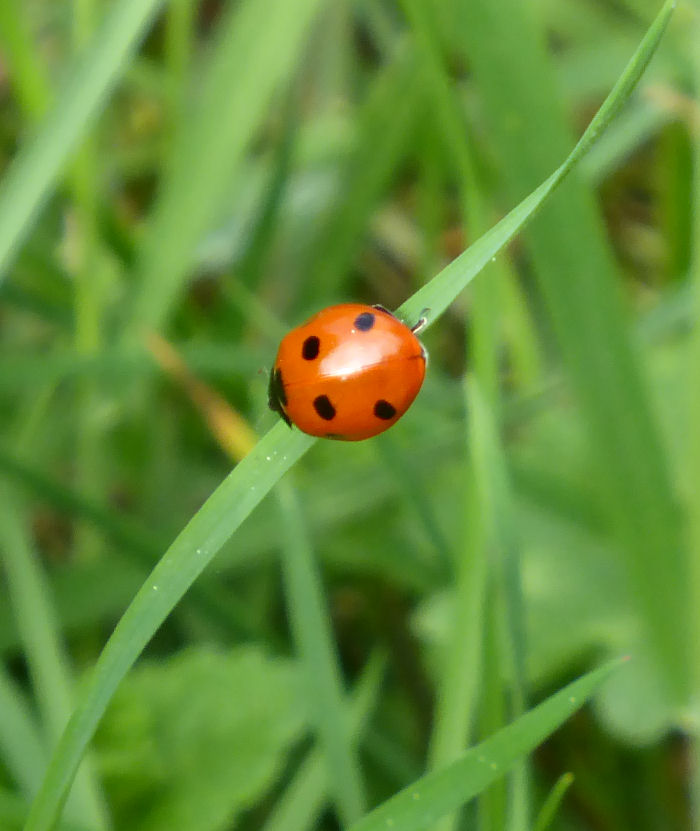
It has been a busy Easter on the reserve as the weather was better than forecast and many visitors enjoyed walking around and seeing all the spring flowers, butterflies, bees and listening to birds calling.
Thank you to everyone who has helped over the last few days.
Catterick Market Fundraising
Sunday, April 20th 2014
Several of our volunteers have spent part of their Easter Sunday at Catterick Market helping to raise funds for Foxglove Covert.
We were lucky with the weather, where rain had been forecast earlier in the week, we only felt a couple of rain drops falling all day! The money from this still needs counting and we will announce the total later in the week. The funds raised here are going to be used to help purchase a new interactive touchscreen display for in the classroom.
Thank you to everyone who has helped out today; it is very much appreciated by everyone at Foxglove!
Great news from the 'counting house'. The collection this morning raised £407.
Toads
Saturday, April 19th 2014
Frogs arrived first, spawned and left the ponds. The spawn remained, at the edges of the ponds and in the middle, so we are back to our wet dry summer! It seemed a long time before we noticed any changes to the spawn, but slowly the clear jelly became a black mass of tiny tadpoles. Now they have disappeared. On hatching the tadpoles feed from the jelly and then fall to the bottom of the pond and hide in amongst the vegetation until they are strong enough to swim around. Initially they feed on plant material but then turn carnivorous. If the warm weather continues then we should soon be looking for tadpoles swimming around.
The toads arrived just as the frogs were leaving. As with the frogs we have many colour variations. Glennis photographed these different ones, one lighter, one darker, but both with the characteristic coppery coloured eye.
The toads laid their spawn in long strings threaded through last year's vegetation. There is no set time for spawn to hatch as it does depend on the temperature. (The frogspawn in the Field Centre hatched in a very short time due to the warmth.) A walk around in the sunshine yesterday saw the toad spawn in varying stages of development.
In this photograph you can see that the black dots, the eggs, have now turned into comma shapes, within the jelly.
These toadpoles have hatched and are collecting together to feed from the jelly and algae that has collected on it.
It will not be too long before they start to move around the pond. Unfortunately at this age they are at the bottom of the food chain and many other predators will feed on them.
If you look carefully towards the top left of this phtograph you can see a pond skater obviously waiting for its prey!
The adult toads have now left the ponds and like the frogs, will be all around the reserve, restoring their fat levels after hibernation and breeding. Come midsummer we will find tiny frogs and toads leaving the ponds.
A Sunny Day
Saturday, April 19th 2014
This Chiffchaff serenaded the bird ringers as they raised the nets.
During the day another one of 'our' Chiffchaffs arrived in the ringing room. It had been ringed as an adult in April 2011, making it at least three years old. Amazing to think that these tiny birds fly such long distances. We have ringed almost 1400 of them on the site.
Robins are singing from high perches and as the trees are only just starting to leaf they are easily spotted. A ring can be seen on this bird.
During the year the data entered into IPMR (the data handling programme) changes with the seasons. April sees mainly male birds being handled whilst the females are on their nests. Summer migrants return overlapping the winter ones moving north. There are still Brambling feeding in Foxglove and eight new birds were ringed, some with the highest fat reserves ever recorded at Foxglove. Lesser Redpolls continue to come into the reserve and today 30 new birds were processed. A single Blackbird brought the all time total for this species to 1900.
As the temperature rose so the butterflies appeared. Male Orange Tips were feeding amongst the spring flowers along Risedale Beck.
Peacock Butterflies were also seen enjoying the warmth.
Visitors enjoyed the spring sunshine too and were able to have their picnics outside.
Many thanks to everyone who helped during the day.
Odd Jobs
Thursday, April 17th 2014
Volunteers have had a busy day today finishing off a few little jobs around the reserve and filling the bird feeders ready for the bird ringing session tomorrow. David and Lizzie spent time this morning in the woodland repairing the wire on some sections of boardwalk where it had rusted through and become a tripping hazard.
Mike and David also repaired several more of the non-slip strips on the boardwalk through the scrapes. As well as this the back garden was given a tidy, the grass was all cut, and the rest of the benches were brought back to the workshop where they were given a good clean and rub down before being treated with wood preserver.
Thank you to everyone who has helped with these little jobs that keep Foxglove ticking!
Easter Holiday Activity Day
Wednesday, April 16th 2014
Today we held an Easter Holiday Activity event at Foxglove.
First we set off to the outdoor classroom for a bug hunt, we found lots of slugs and worms but the highlights were a lovely Ground Beetle and some millipedes which we were able to look at through the magnifying glasses and see all their legs moving.
After we'd uncovered all the mini-beasts and looked at the different types of places they like to hide in we set off on a nature trail to see what wildlife we could find around the reserve. Brian showed us a tiny shield bug which was on the bridge and we listened very carefully to the Chiffchaff singing.
Before lunch the children donned their wellies and had a look at the dam. They tried to make the water go fast, slow, a long way through the dam and to get it as deep as possible…
...the dam worked so well that some of the wellies just weren't tall enough!
After lunch we made our own bug hotels, with material which had been collected on our earlier walk, and bird feeders which the children took home to put in their gardens.
Thank you to Izaak, Luke, Daniel, Dean and Amber for coming to our event and to Jackie for all her help.
Tree Tubes and Butterflies
Tuesday, April 15th 2014
Eighteen volunteers turned out in glorious weather to help us check and weed the many tree tubes around the reserve. The large team worked hard and by the end of the day several hundred had been checked.
John also completed the first butterfly survey of the year recording three Small Tortoiseshells and sixteen Peacocks. Last year the surveys were not started until mid-May because of the weather conditions. This Peacock was seen sunning itself on the grass near the Field Centre.
Thank you all for your help today!
More Signs of Spring
Monday, April 14th 2014
With the warm daytime temperatures numerous butterflies and bumble bees have been spotted on the wing by visitors. These are most likely queens that have recently emerged to forage on the fresh wildflower blooms and to search for nesting sites. The nesting sites will include old mouse burrows, cavities in hedge banks or even above the ground in grass tussocks. This Buff-tailed Bumblebee was seen flying along Risedale Beck this afternoon.
Blackthorn is coming into flower across the reserve and looks fantastic along many of the net rides, reminding us that it is not long until the first CES ringing day at the end of this month! Blackcaps have also been heard singing along with some of our other summer migrants. Spring is well underway!
Spring Flowers
Sunday, April 13th 2014
Many years ago children were taught about Primroses, thrum-eyed and pin-eyed. (I remember the book well as I prepared my lessons from it.) Looking at the photographs of Primroses, both types are found at Foxglove. A web site report from the Hampshire/Sussex border states that they have 75% pin-eyed and 25% thrum-eyed. No Primroses have (yet) been counted at Foxglove!
Thrum-eyed, shown below, have the stigma part way down the tube and the stamens at the top.
Pin-eyed Primroses have the stigma at the top of the tube and the stamens part way down.
The different arrangement of stigma and stamens, means that these flowers must be cross pollinated by insects that have long proboscis.
Many tree flowers are wind pollinated, this is not so with willow. The yellow catkins seen around the reserve are probably those of Goat Willow. The pollen is strongly scented, so attracting early flying insects. They then visit the female flowers (shown below) to collect nectar and in so doing, bring about pollination.
We have been looking for the Wood Anemones for the last week to no avail; they have now made their first appearance. The white petals are not petals but sepals. They only open when the sun shines.
Barren Strawberry is a plant that can be found growing along the edges of paths, on wood piles and on the moor. The sepals can be clearly seen between the petals. Unlike the Wild Strawberry, it does not produce a fruit.
Coltsfoot, often a flower we struggle to find in bloom, has shown itself in many places this year. It too only opens when the sun comes out.
Different Bits and Pieces!
Sunday, April 13th 2014
Today the blog has several different bits and pieces of information and news, none of them connected!
The RSPB Members, who are at York this weekend came to visit Foxglove. They divided into three groups and were taken on guided walks around the reserve, taking in the bug hotel (below) woodland, moorland and the lake. Although the weather was not very spring like, they enjoyed their walks and saw a variety of flora and fauna. During refreshments, Bullfinch, Brambling and Goldfinch were amongst the birds recorded in the back garden.
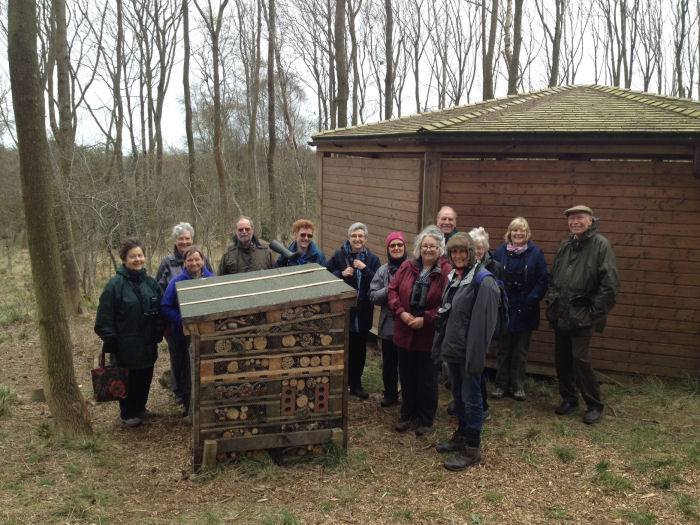
On Wednesday the Artful Owls were busy making biscuits, clay tiles and using different techniques to produce art work. These, along with photographs of the event, are on display in the Activity Room. The photographs below show some of some of the art work.
Mallards are associated with water. Should we be worried about the state of the roof of the Field Centre?
At this time of year Common Dog Violets are blossoming along the paths, on the moor and in the woodland, where there is soil. However there are always some who grow elsewhere. The first was found on the boardwalk…
...the second on some steps. In neither place is there very much soil!
Yesterday in the warmth and sunshine the bumblebees were buzzing around in the willow catkins. Although much cooler today they were still busy, this time, looking for suitable homes.
A Busy Day!
Saturday, April 12th 2014
The bird ringers arrived today in sunshine! Birds were calling all over the reserve. Greylag Geese, Curlew and Great Spotted Woodpecker joined in the chorus. Although the Scrapes are still wearing their winter coat, if you look closely there are green shoots appearing everywhere.
In the ringing room birds handled included Brambling, Siskin and many Lesser Redpoll. Several of the birds seen today are coming into breeding condition, and the Brambling especially had substantial fat scores which they had built up ready for their migration back across the North Sea to Scandinavia and beyond. Twenty two were ringed during the session.
Lesser Redpolls have been increasing in number on the reserve over the last few weeks and today 36 were ringed. One of the recoveries received from the BTO this week, was of a Lesser Redpoll ringed at Foxglove Covert that had been controlled at Colney Heath in Hertfordshire.
Chiffchaffs returning from the Mediterranean area have been re-aquainting themselves with the reserve. We have also been waiting for the Willow Warblers to make an appearance and today the first one arrived! Just as with the first Chiffchaff two weeks ago it was one of 'our' birds. It was initially ringed as an adult in June 2012. Weighing less than 10g this bird has now flown to and from Africa five times!
Ben and his family were in the ringing room learning about ringing when it came in and he was able, under supervision, to release the first 2014 Willow Warbler.
Our first Willow Warbler of the season!
Another returnee is Kidney Spot Ladybird which has arrived back at Kidney Spot Corner! Only one though!
During the day the temperature rose and the hive bees became very active. They were returning to their hive carrying pollen, probably from the willow catkins.
The moth trap had been set overnight. When all the moths had been identified and counted, there were 79 moths of 10 species, including Common Quaker, Hebrew Character and Shoulder Stripe.
This week at Foxglove, volunteers have been involved not only with bird ringing and moths, but also with the art activities, habitat management, addressing envelopes for Undergrowth, carrying out administative work and helping with the visit of Lord Zetland. All of these varied tasks help to make Foxglove a very special place. Many many thanks to everyone involved.
And finally the pools under a blue sky!
Artful Owls!
Wednesday, April 9th 2014
Today saw the first of our Easter holiday activity mornings, Artful Owls, an artistic investigation into owls and their fascinating lifecycles. This event was a fantastic success with at times, over forty people in the classroom participating in the five different activities on offer.
Children enjoyed making and decorating their own owl inspired biscuits which where enjoyed later on in the morning with a cup of juice.
Tiles were cut, designed and shaped out of clay, which will be fired and glazed before all being mounted in a frame and put up on display.
Prints were made using potatoes, sponges and jelly plates. The textures, shapes and colours brilliantly captured the essence of an owl! Wax resistant drawings were also made, some focusing on single feathers. Finally, the children (and adults) were able to dissect owl pellets to find out more about the diets and lives of these beautiful nocturnal creatures.
All of the artwork has now been mounted and is now on display in the classroom for visitors to admire and enjoy! Well done everyone!
Thank you to everyone who helped out this morning, but we must also say a special thank you to Glennis who has put so much time into organising this event and provided so many of the materials used this morning.
Exciting News
Tuesday, April 8th 2014
Foxglove saw some exciting news today with Lord Zetland being announced as patron of the reserve.
He was greeted by staff and volunteers, along with some freshly home baked cakes before being taken on a guided walk of the reserve to see some of the recent habitat developments.
We visited the new terraced pools above the lake, which were looking fantastic in the fine weather.
We then crossed the moorland where volunteers have been busy planting out the Yellow Rattle plugs on the wildflower meadow.
Meanwhile volunteers have been busy starting one of the Spring jobs; checking and weeding out the 700 plus tree tubes from recent planting work.
This task while not the most exciting, was completed with enthusiasm. About one third of the tubes are now checked, we promise you can do something different next week!
Thank you to everyone who has helped out today from the outside team and from everyone involved this afternoon.
Around the Reserve
Sunday, April 6th 2014
It has been reported on the blog that ladybirds have been scarce this winter, but out on the rounds, checking all was well in the woodland, Sandra and Brian reported 16 Spot Ladybird on their usual marker posts.
They also saw Seven Spot Ladybird and Eyed Ladybird, both shown below.
Mealy (Common) Redpoll were again recorded in the back garden, feeding with the Lesser Redpolls. Snipe are drumming over the wetland and Curlew are calling.
After the rain and dampness the Excidia recisa fungus is again starting to develop its fruiting bodies on some of the willow. Lesser Celandine is flowering and speedwell is out near the voley ponds. Elm is in flower along Risedale Beck.
Photographer, camera, sun and blue sky have not yet combined for a picture of the new pools. So to date it is only grey skies and mist, but with beautiful reflections.
Last year's Water Plantain flower stems and grasses are still making patterns with their reflections in the Scrapes ponds.
Mist
Saturday, April 5th 2014
Towards the end of the week the wind has slightly increased and the mist has cleared. (Rain is now forecast!) However it did give opportunities for photography. Last Sunday the hides at the lake could not be seen.

Hedges outside the reserve are green as the Hawthorn bursts its buds. In Foxglove they are a little slower to leaf. Spiders have yet to be recorded this spring, but the water droplets made the webs visible on this branch.
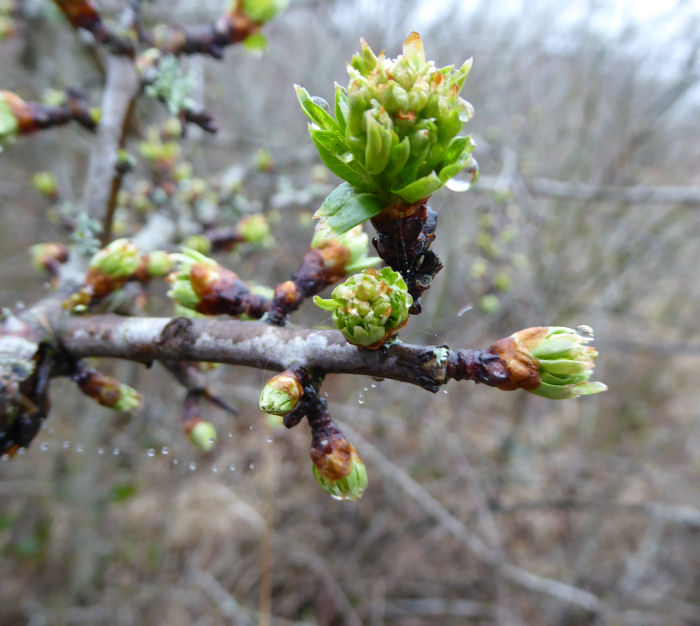
The male flowers of willow are showing their stamens. Until the rain and dampness clear there will be no pollen released.

Primroses are now in bloom in several areas of the reserve but even they have their accompanying water droplets.
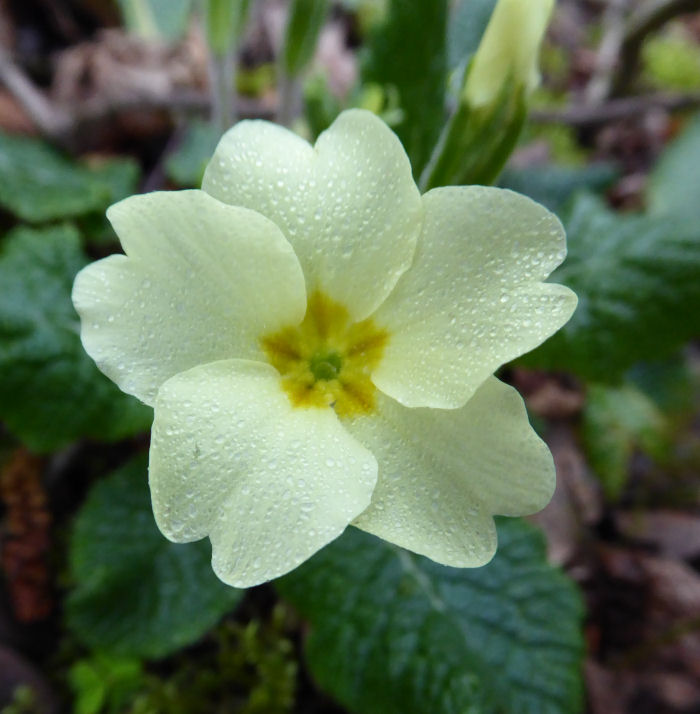
Moth Trapping
Friday, April 4th 2014
On Wednesday morning we were greeted with the best moth catch of the year so far! Well over 200 individual moths were identified from in and around the trap.
Red Sword-grass was first trapped on the reserve in 2004 but has not been recorded since 2008. This moth emerges as an adult from September to November where it feeds on overripe soft fruit before hibernating under loose bark and reappearing in late March. During the Spring they feed on sallow catkins.

Diurnea flagella, a micro moth, has again not been seen on the reserve since 2008. This species is single brooded with the adults emerging from March to May. Only the males are attracted to light; females differ from the males as they have shorter and have more pointed wings.

This male Oak Beauty is distinguishable from the female because of his feathered antennae. The brown banding across the forewing is a diagnostic feature that seperates this species from the Peppered Moth. Freshly emerged examples can often be found at the base of tree trunks.

Early Thorn can be distinguished from all other British thorns by its resting position, with the wings held up and pressed together over its back. There are two flight generations, from February to May and then July to September, with the second generation often smaller and paler.

Artful Owls
Friday, April 4th 2014
Next Wednesday is the first of our Easter Holiday events. Join us for a morning of creative art activities based around owls and their lifecycles. Come and learn more about the life of our magnificent owls, with lots of arts and crafts activities as well as walks around the reserve to discover where they live and hunt. All materials will be provided. There will be a £2.50 charge per child to help us cover the costs of materials.
To book on this morning please visit the events page on our website or contact the Reserve Managers on 01748 831113.
Yellow Rattle
Thursday, April 3rd 2014
Volunteers spent time today planting out the new Yellow Rattle plugs on the Moorland Wildflower Meadow.
Yellow Rattle is an attractive semi-parasitic grassland annual. In meadows this plant can weaken and suppress the growth of grasses producing a better display of wildflowers. Yellow Rattle germinates from late February to early March, flowers in June, and sets seed in July. At the end of each growing season as the annual plants die away they leave behind gaps into which new wildflowers can establish.
The top layer of grass was removed by turning over a sod of earth which the plugs were then planted into. This reduces competition on the young plants from other species, giving them the best chance of becoming established. Three areas were planted with the density of plugs becoming less as you move away from the centre to mimic natural clumps and drifts of wildflowers.
Thank you to everyone who helped with this today; it will be very exciting to see how these develop and grow over the coming months!
Hunton and Arrathorne Primary School Visit
Wednesday, April 2nd 2014
Pupils from Hunton and Arrathorne Primary School enjoyed a visit to Foxglove today to learn about the different habitats found here and the animals and plants living in them.
For the older group the guided walks and activities at the Outdoor Classroom served as inspiration for some fantastic poems about the wonderful creatures found here. These were read beautifully once we had returned to the warmth of the Field Centre. The younger children learnt all about the seasons and the different habitats we have at Foxglove, they enjoyed spotting the spring plants and wildlife on their tick sheets and waching the toads.
If you would like your school to visit please contact us on foxglovelnr@btinternet.com or on 07754 270980.
April Fools
Tuesday, April 1st 2014
Today's volunteer job was to collect in and clean all the birdfeeders from around the reserve. It is not one of the most loved jobs and the volunteers were hoping it was an April fool!
With the sun on our backs and with many hands making light work, we had completed the job in no time. Once re-assembled the feeders were hung in the trees to dry.
There were a lot of them!
In the afternoon we made the most of such a lovely day and started work on painting the way marker posts and the fence by the Heathland. A small team also filled in all the pot holes down the track.
Once we'd downed tools for the day most people went down to the scrapes where there are now hundreds of toads mating and spawning. Many of the volunteers said they had never seen such numbers of toads all in one place; it's definitely worth a visit if you can get to Foxglove this week.
As you can see, the toad spawn is laid in long thin lines. In the picture below you can see the comparison between the toad and frog spawn.
Somewhere in here is a poor female who is surrounded by the smaller male toads!
Thank you to everyone for their help today, and thanks to Hutch for the use of his photos.

.JPG)
.JPG)
.JPG)
.JPG)
.JPG)
.JPG)
.JPG)
.JPG)
.JPG)
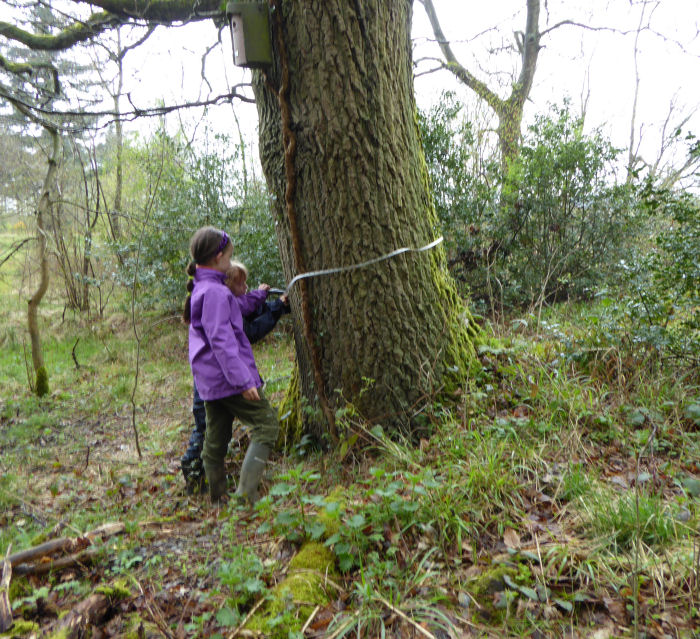
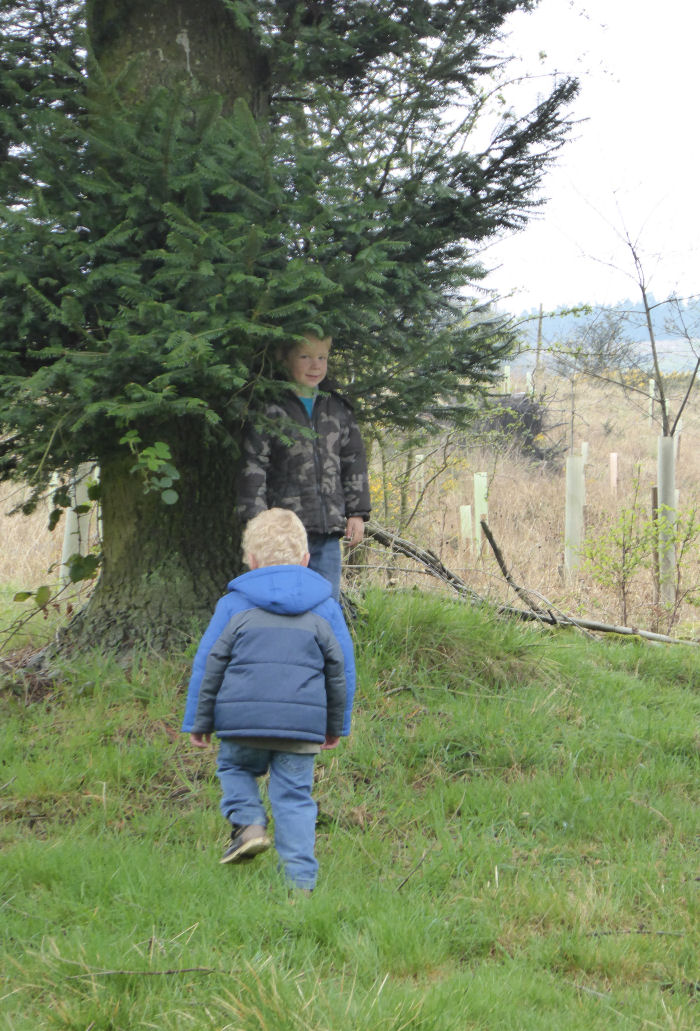
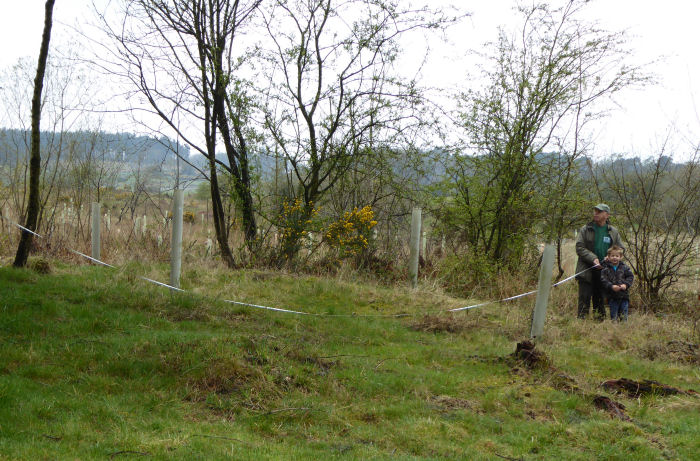

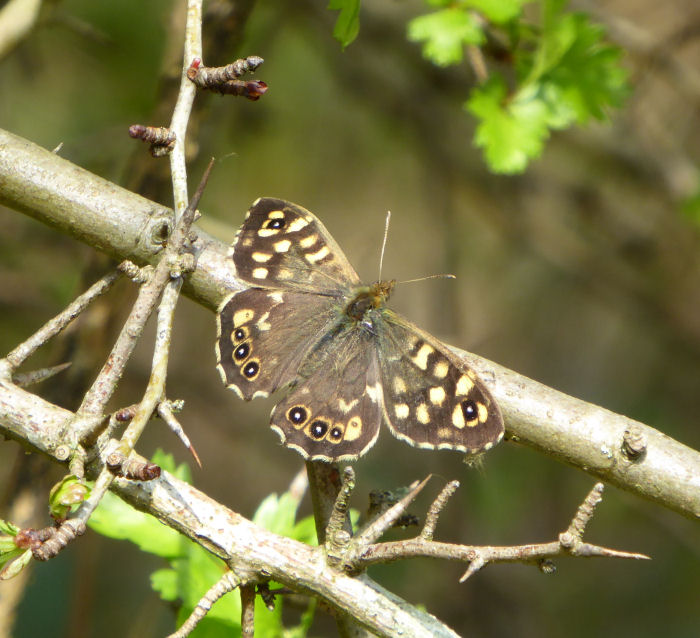

.JPG)







.JPG)
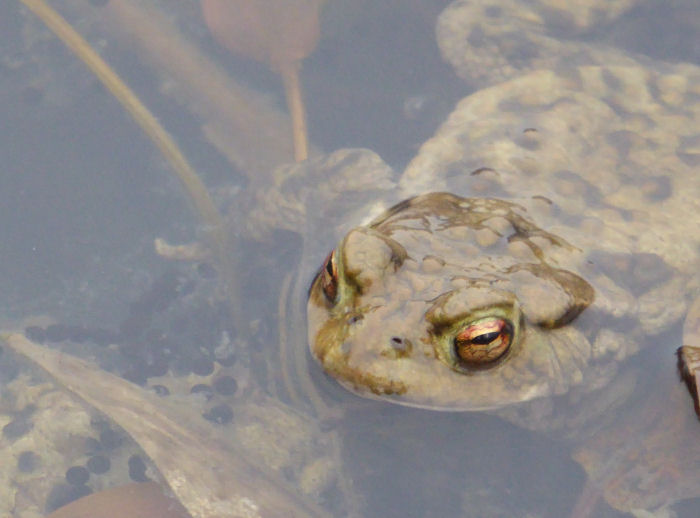
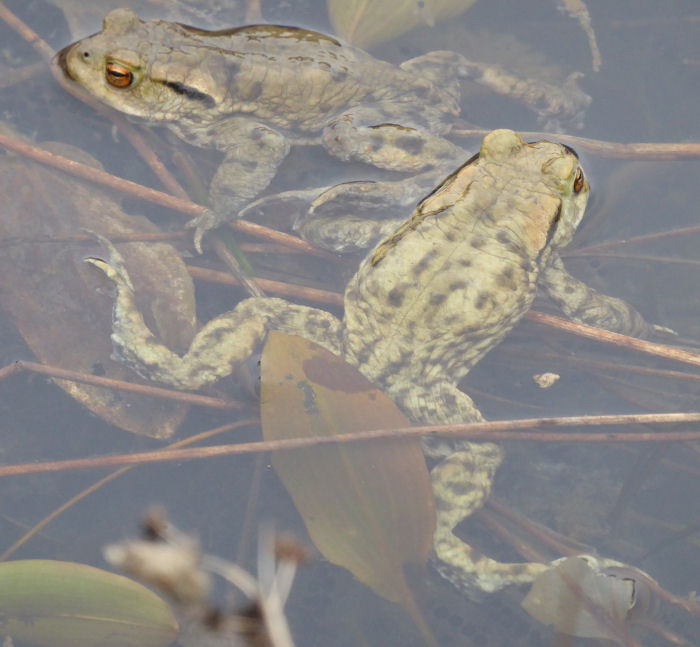
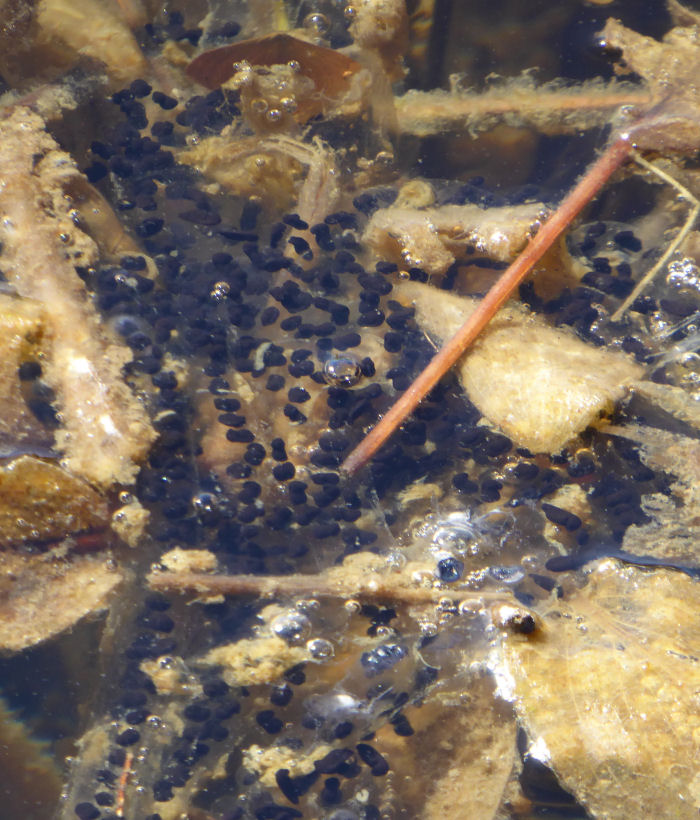
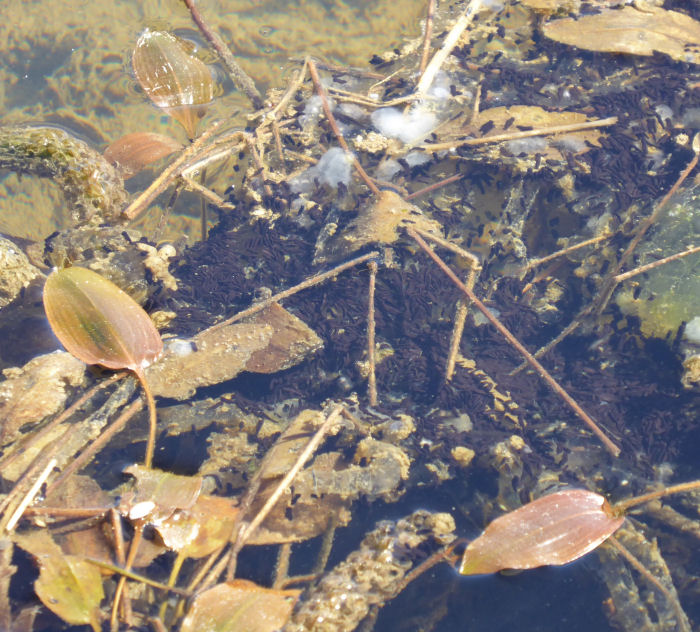
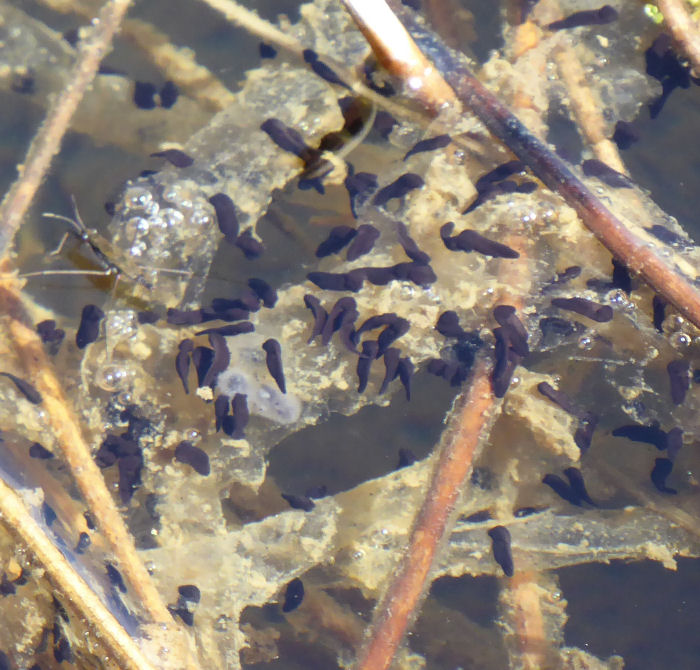












.JPG)
.JPG)
.JPG)
.JPG)

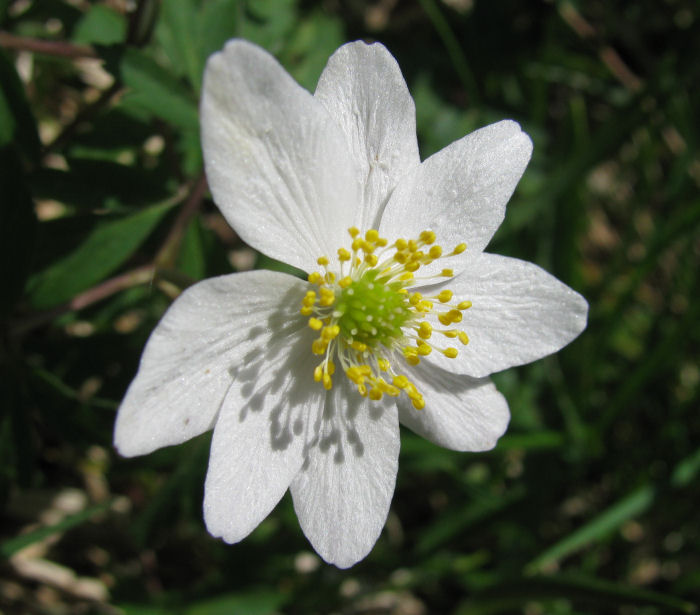
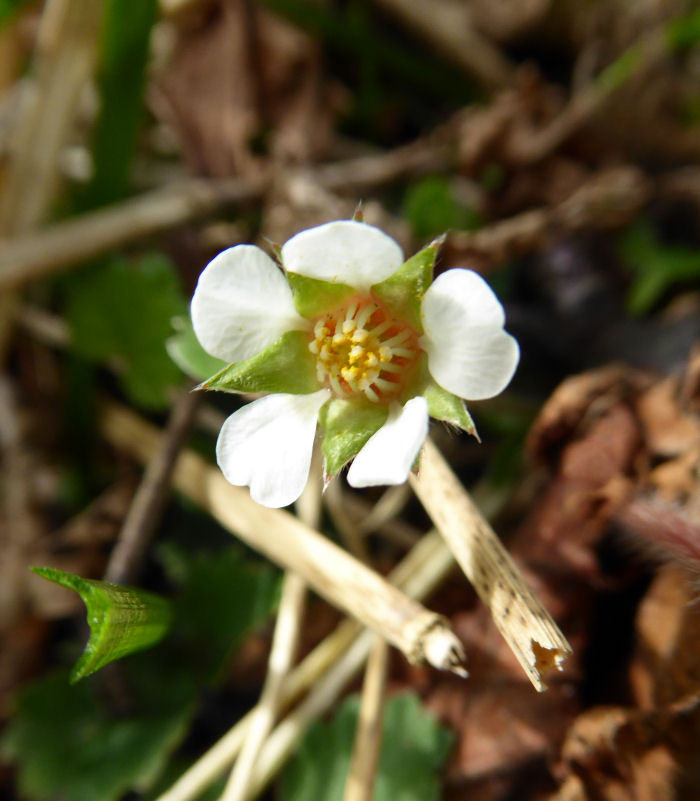
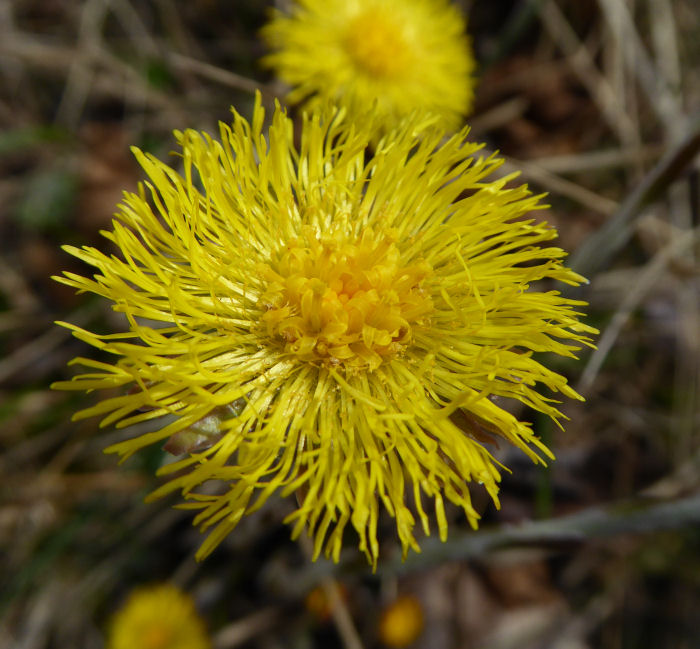




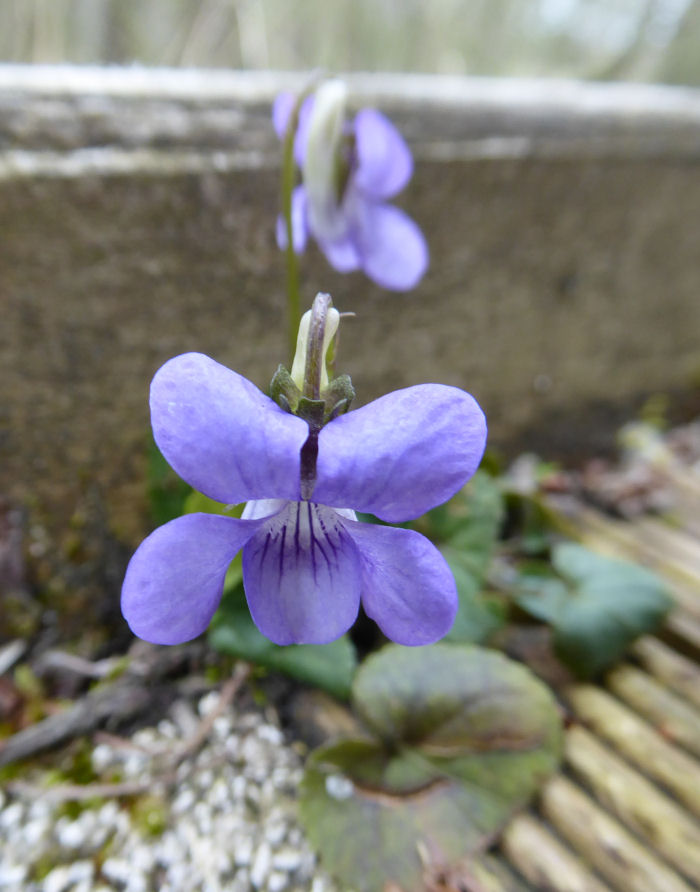
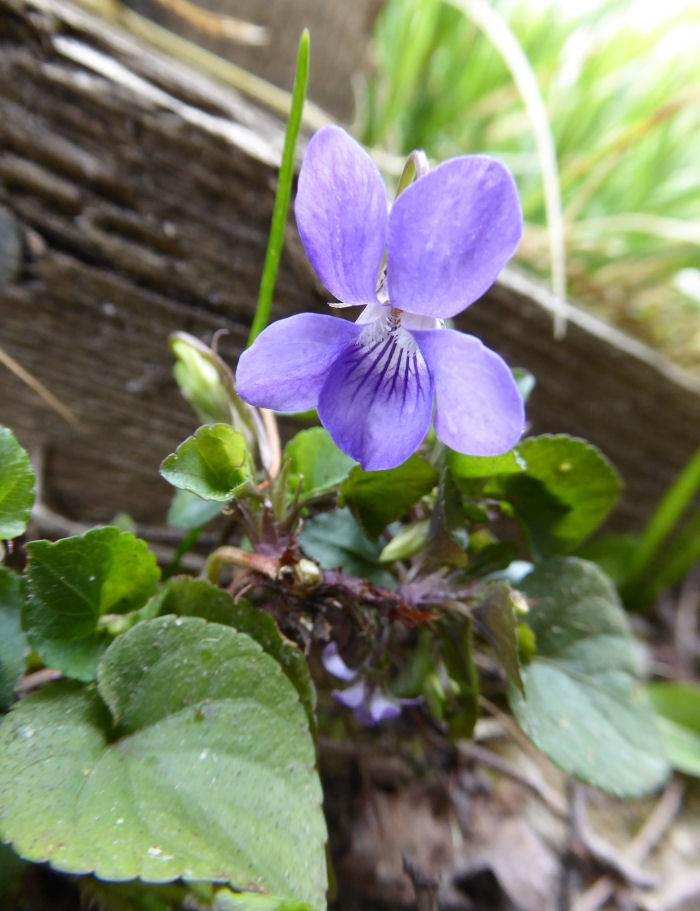




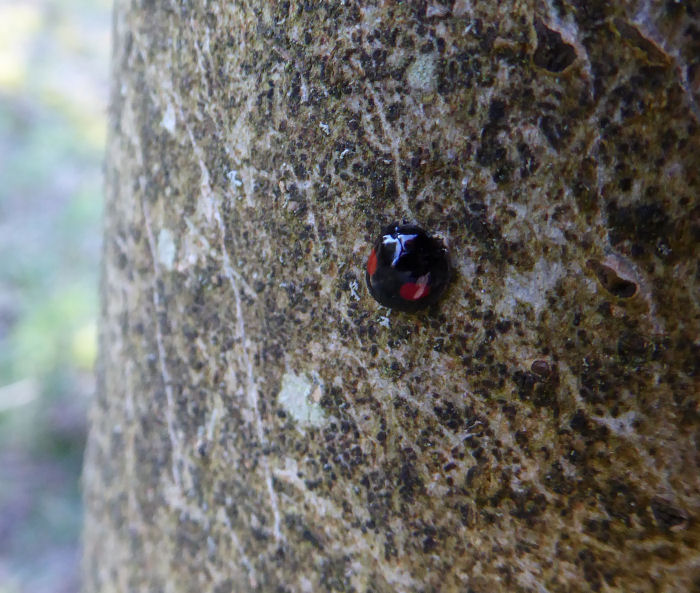

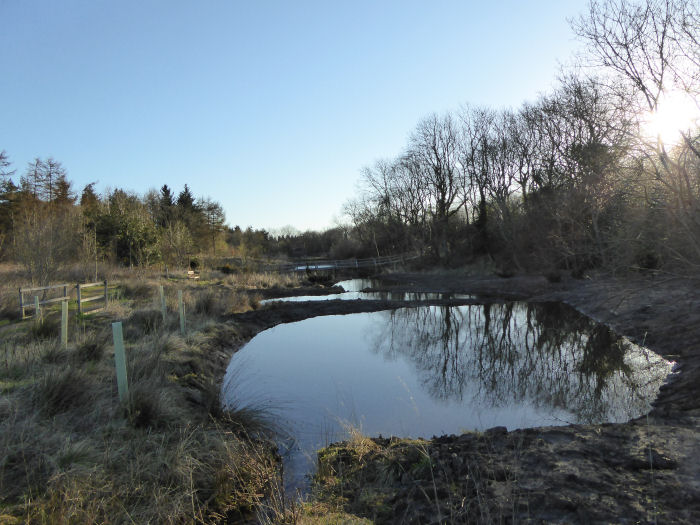








.JPG)
.JPG)
.JPG)

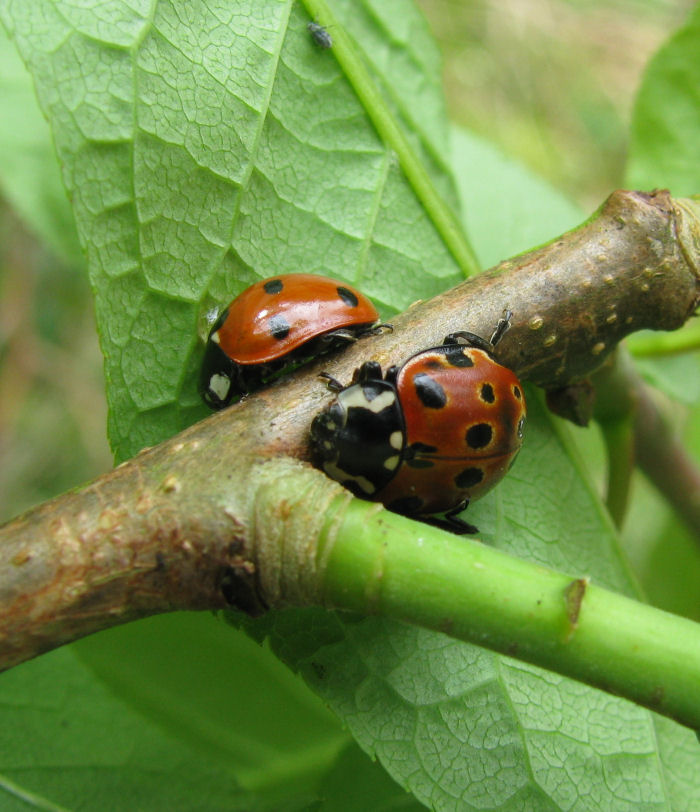
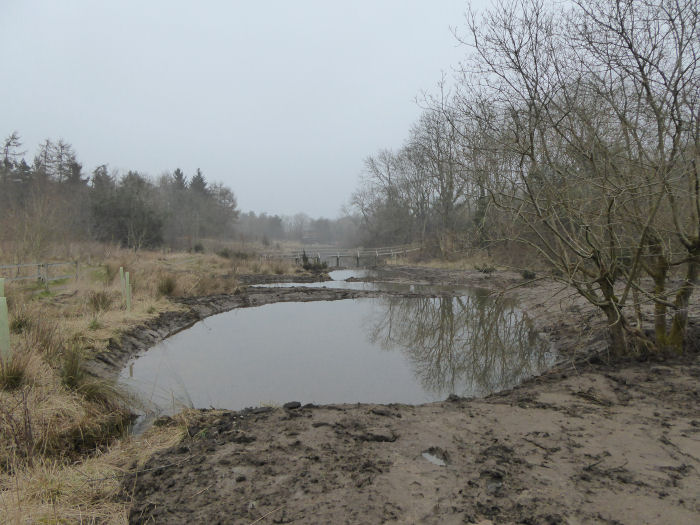
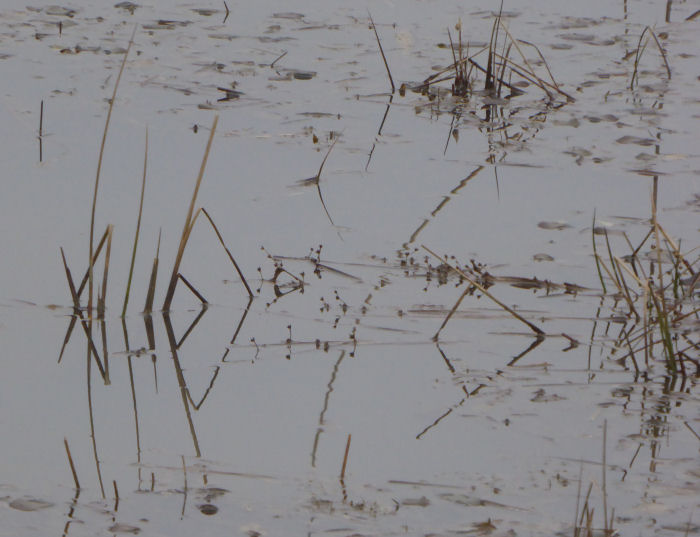

.JPG)
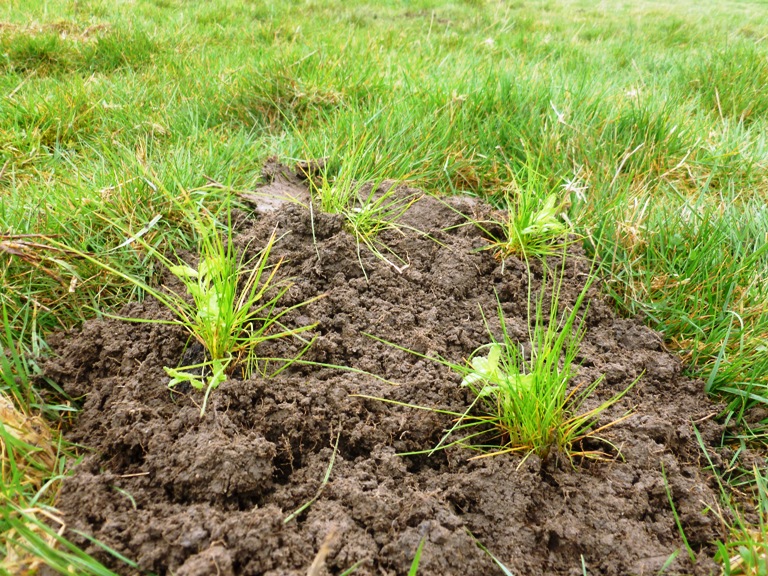
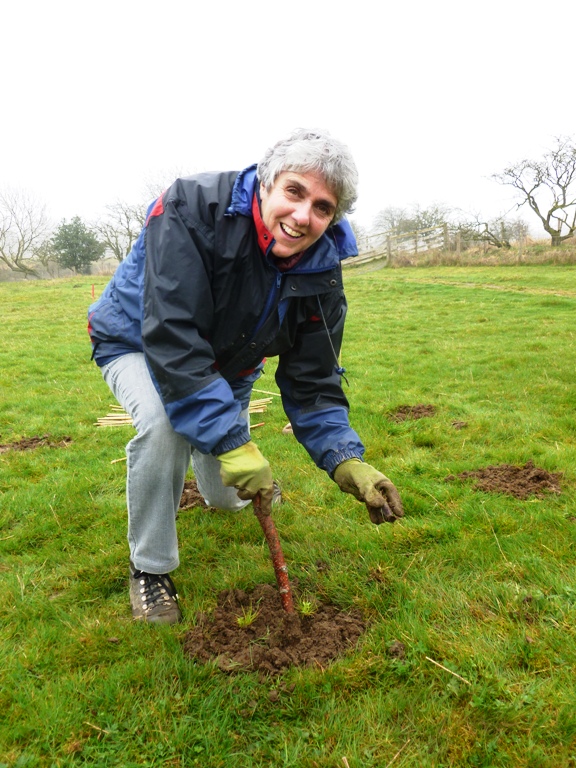

.JPG)
.JPG)
.JPG)
.JPG)

.JPG)

